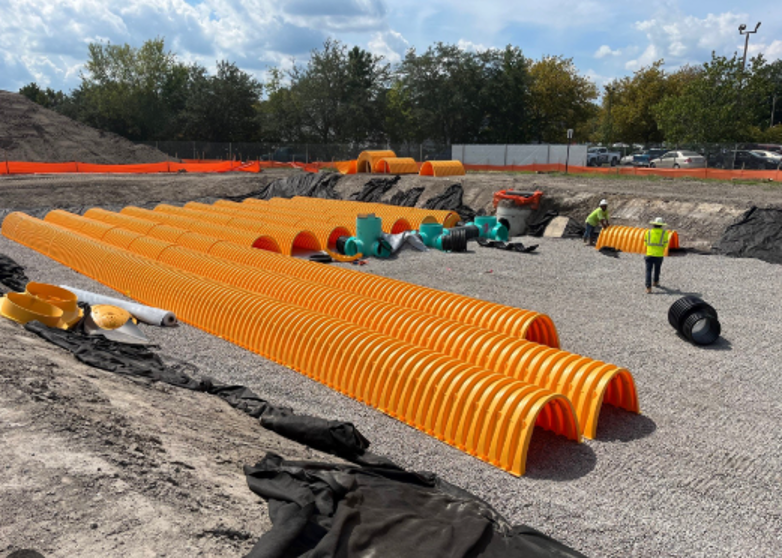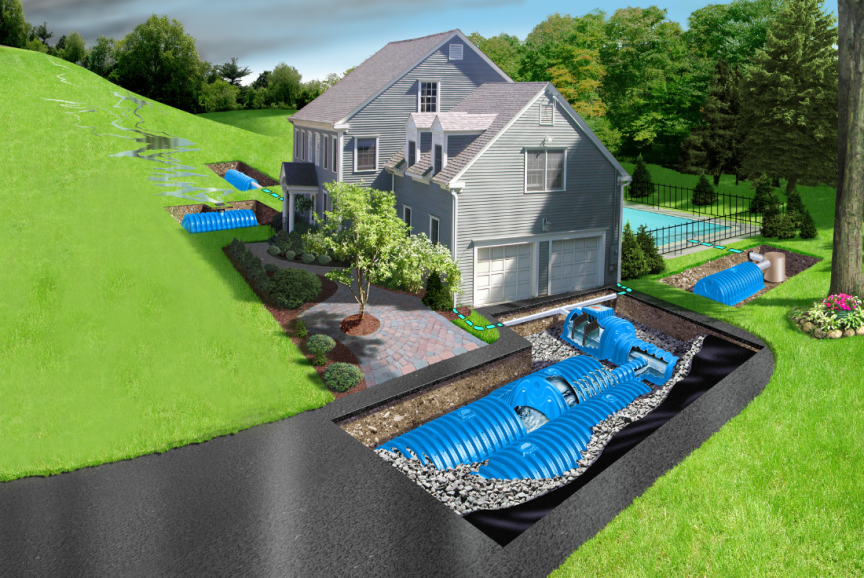Every month it seems we come back to Stormwater and how to effectively mitigate it. It is a hot button issue that resonates in markets far and wide, but one thread is clear: managing stormwater is a steadily growing topic that gains momentum year after year. Every region is different. More rural areas may rely on simply getting the water to “the ditch” somewhere on the property that will whisk the water way to a nebulous location off the property where the water will eventually make its way back underground.
Managing Regulations
Not everyone has this level of latitude when it comes to managing stormwater. Many of our customers are dealing with restrictions like impervious surface allowances where you are then forced to follow set guidelines to capture and detain water based on the size of a property and the percentage of impervious surface on the site. Detention is a huge part of the equation for stormwater moving into the future.
So, what does sub surface detention look like?
The simplest way to think about a detention system is to visualize an underground pond. Simply put a void space to collect the water and slowly let the water seep back into the ground. Instead of doing this at the surface, the water is managed below the lawn, driveway, or parking lot instead of a large traditional detention pond visible at the surface.
This has been standard protocol for commercial projects for years as it saves wasted space on stormwater management by installing a detention pond on the site. The developer now can maximize his usable space. The shift has come at the residential end of installations. Chamber systems are being used in applications to overcome impervious allowances, manage runoff from impervious surfaces and to satisfy municipal codes to meet requirements. These systems vary in size from a single chamber to manage roof run off as seen below.

A single installed chamber can alleviate the need for gravel pits. What makes this type of installation desirable is that it allows you to excavate a much smaller hole for the installation. A pit filled with gravel will only hold water in the space between the stones which comes out to about 30 percent of the volume of the whole area filled with ¾ inch clean stone. Installing a chamber not only gives storage in the stone around the unit, but the true void space within the chamber itself.
Overall storage that needs to be calculated based on the total amount of impervious surface you are looking to capture. Our account reps are happy to walk you through the steps to make this happen.
The same principles apply to larger scale commercial detention systems like the one seen below.

These systems require a much more in-depth process of design and approval. Engineering and calculations are handled by dedicated firms. Installation requires large machinery, extensive installation knowledge and huge amounts of pre planning to alleviate unexpected costs. Contractors who handle these chamber systems are familiar with the process. Those who are not could put their company in an undesirable position that could even cost them money. Nobody wants that!
Finally,
Regardless of system size, Central TIS is your supplier for all your chamber system needs. We stock the chambers, pipe, fittings and accessories to make your job a success. Small residential design build systems can be calculated in house through our internal network of stormwater experts. If the system you are looking to install comes with a set of plans, absolutely share those plans with your account rep. We can handle the take-off and the quote to make sure you are maximizing your time instead of plowing through pages of plans. Central is your source for drainage products, let us be your partner in your success!

